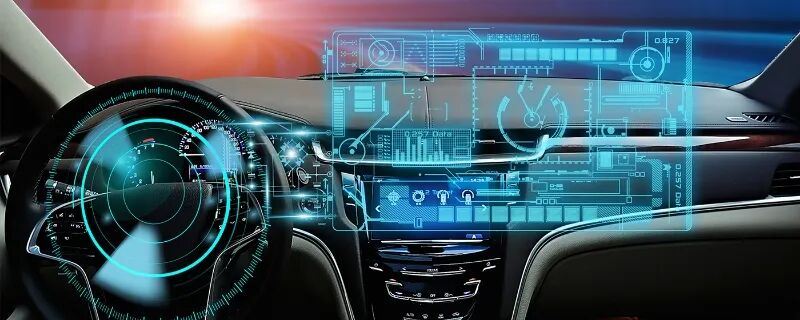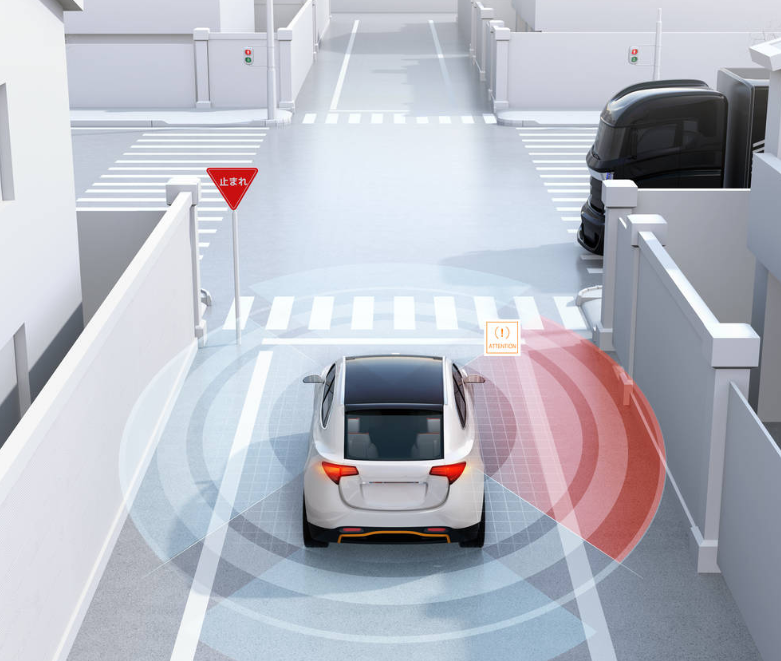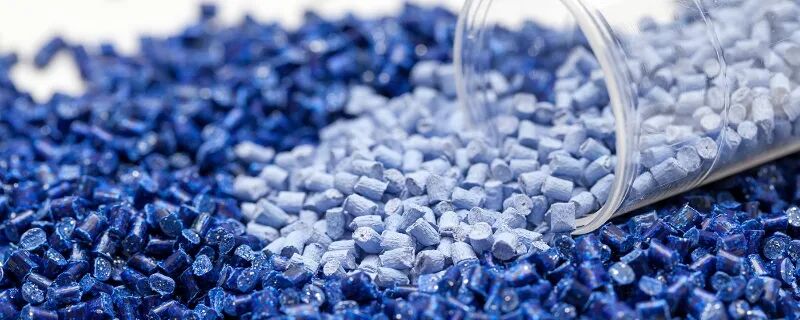The next "popular car" wins with new materials
In 2025, when the penetration rate of new energy vehicles in China surpasses the 50% mark, range, battery safety, and manufacturing costs remain the core pain points of the industry. When battery energy density approaches the theoretical limit, when the conflict between lightweight design and safety becomes increasingly acute, when carbon tariffs reshape the cost structure of the global supply chain, and when price wars become fierce... behind the anxiety about range, safety, and cost, the real underlying contradiction isMaterial Anxiety。

How to achieve lightweight to improve endurance while ensuring safety and performance, and effectively control costs?New materials are the key variable for breakthroughs in new energy.
01
Four Major "Interrogations" of the Automotive Industry
As lightweighting, electrification, intelligence, and low-carbonization become irreversible trends, four sharp questions confront car companies. Who can meticulously calculate...There is an additional 1% improvement space on the material side.Whoever can define the next "popular car".
How to Overcome the Range Anxiety Issue?
As the range increases by 100 kilometers, the weight of the power battery increases by approximately 50kg. How can "weight reduction without compromising safety" be achieved? This is the unavoidable "weight paradox" in new energy vehicles. Data shows that if the overall weight of the vehicle is reduced by 10%, the range can be increased by up to 10%. However, the lightweight potential of traditional metal materials is nearing its limit. As car manufacturers meticulously calculate the "electricity consumption per 100 kilometers," the specific strength (strength, density) of materials becomes crucial.

Concerns about safety, how to alleviate worries?
In 2024, 72% of domestic new energy vehicle fire accidents were caused by battery issues. With the development of automotive intelligence and electrification, traditional metals are highly conductive, and engineering plastics have insufficient heat resistance, becoming bottlenecks. Whether it is the casing material of the battery pack or the interior decoration materials, materials with excellent flame retardancy, heat resistance, and impact resistance have become the "gatekeepers" ensuring passenger safety.

"The pressure of 'smart driving,' how to alleviate it?"
The detection accuracy of LiDAR requires the radome's dielectric constant to remain stable within a certain range, while the signal transmission of millimeter-wave radar requires materials with low dielectric loss. The touch screens of smart cockpits demand materials with high light transmittance and scratch resistance. The integration of material functions is redefining the intelligent experience of automobiles, and traditional plastics find it challenging to meet multi-performance coordination. How can intelligent driving be realized?

How to shoulder the responsibility of environmental protection?
As global awareness of environmental protection increases, the recyclability and biodegradability of automotive materials have become new focal points. The European Union's Carbon Border Adjustment Mechanism (CBAM) will be fully implemented in 2026, and plans to include downstream products such as automotive parts in its taxation scope. China's "New Energy Vehicle Industry Development Plan (2021-2035)" clearly sets carbon dioxide emission targets, expecting a 70% reduction in vehicle carbon emissions by 2035 compared to 2020. How to achieve material greening and reduce production costs while meeting performance requirements has become a challenge that automotive companies must face.

02
How does plastic help the automotive industry "make a comeback"?
The electrification of automobiles is indeed reshaping the automotive ecosystem, bringing about...Changes in components and even systemsFor interior and exterior aspects, the requirements are intelligence, high brightness and colorfulness, low carbon and environmental protection, lightweight, integration, comfort, humanization, and a sense of technology. For structural components, the requirements are replacing steel with plastic, thin-walled, low density, low emission, and adhesiveness. For thermal management systems, the requirements are high heat resistance and integration. For battery systems, the requirements are large capacity, high voltage, and high current while ensuring safety.

Compared to metal materials, the density of modified plastics is only 1/8-1/4 that of steel, which can reduce weight by about 30% under the same strength. Compared to traditional plastics, through physical and chemical modifications (such as glass fiber reinforcement and copolymerization modification), it can simultaneously meet...Strength, heat resistance, flame retardancy, environmental protectionAnd various other requirements.
High strength and high toughness coexist:Through toughening modification, plastics can significantly enhance impact resistance while maintaining a lightweight nature, meeting automotive safety requirements.
Enhanced flame retardancy and heat resistance:Add flame retardants and heat-resistant modifiers to ensure the stability of plastics under high temperatures or fire conditions, providing safety assurance for passengers.
Significant cost-effectiveness:Compared to metallic materials, modified plastics have a significant advantage in production costs and are easy to recycle and reuse, aligning with the concept of sustainable development.
High design flexibility:Plastic has strong plasticity, which can meet the design requirements of complex automotive structures and provide more possibilities for automotive styling innovation.
In this contest between technology and capital, modified plastics are redefining the performance boundaries of automotive materials through molecular chain design, becoming a key variable in addressing the aforementioned questions.
03
Golden Hair's "Answer Sheet": Comprehensive Solutions for High-Performance Automotive Materials
As a global leading supplier of modified plastics, Kingfa Sci. & Tech. Co., Ltd. has officially entered the automotive materials market since 2000, leveraging its profound technical expertise and keen market insight.Build a comprehensive high-performance materials solution that covers all scenarios and the entire chain.From the vehicle body structure to the three-electric system, every material accurately addresses industry pain points, using "material innovation" to solve "range anxiety," "safety anxiety," "cost anxiety," and "environmental anxiety."

Lightweighting
Replace steel with plastic, making extended range "light" and easy.
In the "weight vs. endurance" game, Jinhair Technology achieves "weight reduction without compromising safety" with a material combination of "high strength + low density."
Continuous Fiber Reinforced Thermoplastic Composites (CFRT), PP Honeycomb Sandwich Panel, and Long Carbon Fiber Reinforced Thermoplastic.With low density, high strength, excellent impact resistance, and 100% recyclability, it can be used in body structural parts, body panels, and interior and exterior trim components to replace steel with plastic, replace wood with plastic, and promote overall vehicle lightweighting.Mucell molding technology dedicated nylon material.Replacing traditional materials can reduce weight by up to 9%, shorten the molding cycle, and reduce clamping force. It can be applied to engine decorative covers or flat components.Fiberglass reinforced PA/PP alloy material(KF-EP300M, KF-SP179, KF-BM301C), while maintaining high strength, high toughness, and high heat resistance, reduce weight, lower costs, and improve nylon water absorption. They can be applied to engine decorative covers, fan shrouds, door handles, and bases, etc.Thin-wall and micro-foaming technologyFurther exploiting lightweight potential allows exterior parts like bumpers to achieve up to a 30% weight reduction, and components such as door panels and spare tire bases to achieve a 10%-20% weight reduction while maintaining mechanical performance. The molding cycle is also shortened by approximately 20%, thereby reducing costs.
Electrification
Heat-resistant and weather-resistant, building a "safety barrier" for the three-electric system.
To address the high temperature, high humidity, and high voltage environments of batteries, motors, and electronic control systems, Kingfa Sci & Tech Co., Ltd. builds a safety defense line with "extreme environment adaptability" materials.
Semi-aromatic nylon series productsPA6T, PA9T, PA10T, etc., with their outstanding heat resistance, high stability, and excellent hydrolysis resistance, can be adapted for motor peripheral structural components and electronic control modules.Higher salt-resistant grade nylon material "SR" (PA66-G33)The material exhibits excellent tensile strength, flexural strength, and calcium ion resistance, making it suitable for application in engine water chambers to enhance performance. The hydrolysis-resistant PBT material retains up to 90% of its tensile strength and 64% of its impact strength, providing long-lasting protection for ABS housings and automotive electronic components."HP" grade ultra-high temperature resistant material PA6, ultra-high temperature resistant glass fiber reinforced nylon PA66Possessing ultra-high strength and ablation-resistant materials, it can meet the collision safety requirements of key structural components such as car door handle bases, safeguarding battery safety. Developed in collaboration with leading new energy companies.Battery pack ablation-resistant injection molded coverIt can withstand ultra-high temperature flame ablation, reduce weight by about 50% compared to traditional sheet metal, improve processing efficiency, and has been mass-produced for use in power batteries and energy storage battery fields.
Intelligentization
Function Integration: Reshaping the "Interaction Experience" of Smart Cockpits
The upgrading of intelligent driving and cockpit has set higher demands on the "functional synergy" of materials. Kingfa Technology responds to these needs with an integrated material solution of "light, electricity, and touch," continuously optimizing material application solutions for automotive sensors, controllers, actuators, radars, cameras, and more. This assists automotive companies in creating a fast, smooth, and cool intelligent driving experience for users.
LCP materialsWith advantages of high strength and low dielectric, it is used for packaging lithium batteries in new energy vehicles to achieve domestic substitution.Light-shielding ABS (HR-527A Series)Achieve full blackout with a high proportion of titanium dioxide to eliminate light interference for the dashboard sunshade.Light-scattering PC materialEnhance the consistency of light between LiDAR and displays with uniform diffuse reflection characteristics.Highlight black material(PMMA, ASA/PMMA alloy) with ultra-high blackness and 95% gloss, combined with scratch resistance and weather resistance, has become the preferred choice for pillar exteriors and grilles.Good Tactile TechnologyAchieving a "leather-like" experience on components such as the steering wheel and door panels through low gloss and a soft texture, with excellent scratch resistance; for millimeter-wave radar...Radar-transparent materialsTo meet anti-interference requirements, ensure stable signal transmission of the radar bracket in complex environments, and provide support for accurate judgment in intelligent driving.
Decarbonization
Circular regeneration, building a full lifecycle "green loop"
Under the global carbon tax and "dual carbon" goals, Kingfa Sci. & Tech. Co., Ltd. reduces the carbon emissions of the entire industry chain with "recyclable, low-emission" material solutions. It has integrated a low-carbon production chain and utilizes physical regeneration processes for recycling, achieving a "waste plastic-new material" closed loop, which can reduce carbon emissions by 60% to 90%.
recoURBAN series recycled PPModified from recycled bumper materials, the performance is close to that of new materials and is used for automotive underbody shields.Non-painting material It has excellent scratch resistance, is easy to recycle, can reduce process complexity, and reduce production costs.Low emission technologyBy using molecular sieve adsorption, DVMB devolatilization system, and other methods, the issue of odor in automotive materials is systematically addressed from five aspects, reducing in-car pollution at the source.
From material research and development to application scenarios, Kingfa Sci & Tech not only provides single materials but also collaborates with automakers to build an innovation ecosystem through a full-process service model of "joint laboratories + early-stage design participation + global supply chain."
04
The Next "Decade Question"
It is reported that by 2025, the global market size for automotive modified plastics will exceed 400 billion RMB, with the demand for high-temperature resistant and flame-retardant modified materials driven by new energy vehicles growing at an annual rate of over 35%.Modified plastics are evolving from "auxiliary materials" to "core competency carriers."In the future, with the integration of technologies such as synthetic biology and AI materials design, automotive modified plastics will reach new heights of being "lighter, tougher, and lower in carbon emissions."
As an innovator in materials, Kingfa Technology will continue to provide full-chain value to the automotive industry in the dual roles of "insightful observer" and "innovator," assisting car manufacturers in...Lightweighting, decarbonization, intelligenceAchieve breakthroughs on the track. Make the entire vehicle "lighter," and also make the Earth "lighter."
【Copyright and Disclaimer】The above information is collected and organized by PlastMatch. The copyright belongs to the original author. This article is reprinted for the purpose of providing more information, and it does not imply that PlastMatch endorses the views expressed in the article or guarantees its accuracy. If there are any errors in the source attribution or if your legitimate rights have been infringed, please contact us, and we will promptly correct or remove the content. If other media, websites, or individuals use the aforementioned content, they must clearly indicate the original source and origin of the work and assume legal responsibility on their own.
Most Popular
-

List Released! Mexico Announces 50% Tariff On 1,371 China Product Categories
-

EU Changes ELV Regulation Again: Recycled Plastic Content Dispute and Exclusion of Bio-Based Plastics
-

Mexico officially imposes tariffs on 1,400 chinese products, with rates up to 50%
-

Clariant Unveils Cost-Cutting Plan Details, Plans to Shut Down Multiple Plants
-

Nissan Cuts Production of New Leaf EV in Half Due to Battery Shortage






